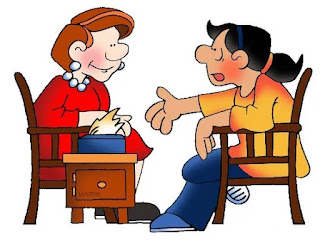Gesell’s Drawing Test is a developmental assessment tool
that evaluates the cognitive and motor abilities of children between the ages
of 3 and 10. Here are some key points to remember about Gesell’s Drawing Test:
Purpose: Gesell’s Drawing Test is used to evaluate a child’s
cognitive and motor development. The test can identify areas where a child may
need further assistance, such as fine motor skills or visual-spatial
perception.
Procedure: The child is asked to draw a human figure in a
specific way, such as facing forward or backward, and then asked to draw
additional items, such as a tree or a house. The drawings are then evaluated
for accuracy, detail, and overall quality.
Scoring: The drawings are scored on several different
criteria, such as proportion, placement, and detail. Each criterion is given a
score, which is then added up to determine the overall score for the drawing.
Interpretation: The scores can be used to evaluate the
child’s cognitive and motor development, as well as to identify areas where the
child may need further assistance. For example, a child who scores low on fine
motor skills may benefit from occupational therapy.
Limitations: It is important to remember that Gesell’s
Drawing Test is just one tool for evaluating a child’s development. It should
be used in conjunction with other assessments and observations to get a
complete picture of the child’s abilities.
Overall, Gesell’s Drawing Test is a useful tool for
evaluating a child’s cognitive and motor development. It can provide valuable
information about a child’s strengths and weaknesses and can be used to create
a plan for further support and intervention if needed.
Technical Details
Test Administration: The test consists of three parts -
human figure drawing, geometric figure drawing, and drawing from memory. The
child is given a blank piece of paper and a pencil for each part of the test.
Scoring: The human figure drawing is scored on 14 criteria, including proportion, detail, and placement. The geometric figure drawing is scored on 5 criteria, including shape and symmetry. The drawing from memory is scored on 6 criteria, including accuracy and detail. Each criterion is scored from 0 to 2 points, with a maximum score of 44 for the human figure drawing, 10 for the geometric figure drawing, and 12 for the drawing from memory.
Reliability: The reliability of Gesell's Drawing Test has been found to be high, with inter-rater reliability ranging from 0.89 to 0.94. This means that different evaluators are likely to arrive at similar scores when using the test.
Validity: The validity of Gesell's Drawing Test has been supported by research, which has found that the test is correlated with other measures of cognitive and motor development, such as the Bayley Scales of Infant Development and the Movement Assessment Battery for Children.
Norms: Norms for the Gesell's Drawing Test are available for children between the ages of 3 and 10. These norms provide a comparison to the general population and can help evaluators determine if a child's score is within the typical range or not.
Interpretation: The interpretation of Gesell's Drawing Test should be done by a trained professional, such as a psychologist or occupational therapist, who has experience working with children. The test scores should be used in conjunction with other assessments and observations to create a comprehensive picture of the child's development.
Developmental Theory: Gesell's Drawing Test is based on Arnold Gesell's developmental theory, which emphasizes the importance of observing children's behavior in order to understand their developmental progress. According to Gesell, children develop in a predictable, sequential manner, and their behavior reflects their underlying cognitive and motor abilities.
Test Construction: The Gesell's Drawing Test was developed by Arnold Gesell and his colleagues in the early 20th century. The test was designed to assess children's visual-motor skills, spatial perception, and ability to follow instructions. The test items were carefully selected to reflect the developmental tasks that children typically master at different ages.
Test Administration: Gesell's Drawing Test is typically administered individually in a quiet, distraction-free environment. The child is given verbal instructions for each part of the test and is allowed to take as much time as needed to complete the drawings.
Test Interpretation: The interpretation of Gesell's Drawing Test involves analyzing the child's scores on each of the test criteria and comparing them to the expected developmental level for their age. For example, a child who scores low on the proportion criterion may be experiencing difficulties with visual-spatial perception, while a child who scores low on the detail criterion may be experiencing difficulties with fine motor skills.
Clinical Applications: Gesell's Drawing Test has been used clinically to evaluate children with a variety of developmental disorders, including autism spectrum disorder, attention-deficit/hyperactivity disorder, and learning disabilities. The test can help clinicians identify areas of strength and weakness in the child's development and develop individualized treatment plans.
Cross-Cultural Applications: The Gesell's Drawing Test has been adapted for use in different cultures and countries, with modifications made to the test items and scoring criteria to reflect cultural norms and expectations. However, the cross-cultural validity of the test has been questioned, as some cultural groups may have different expectations for what constitutes a "good" drawing.
*******









